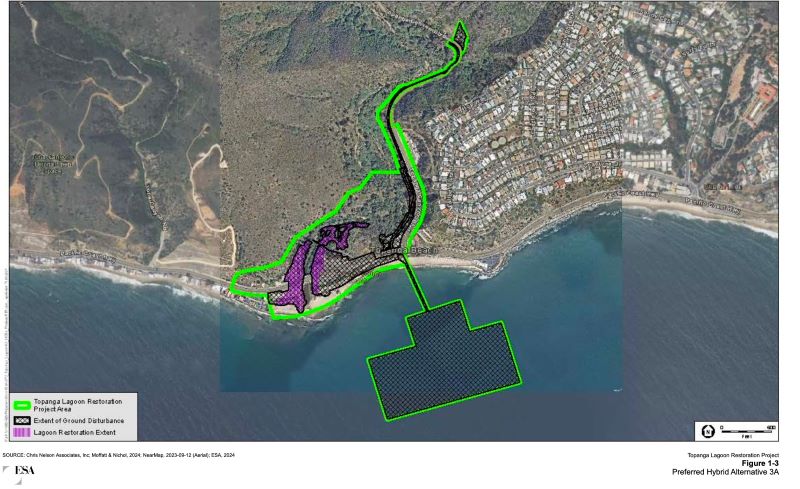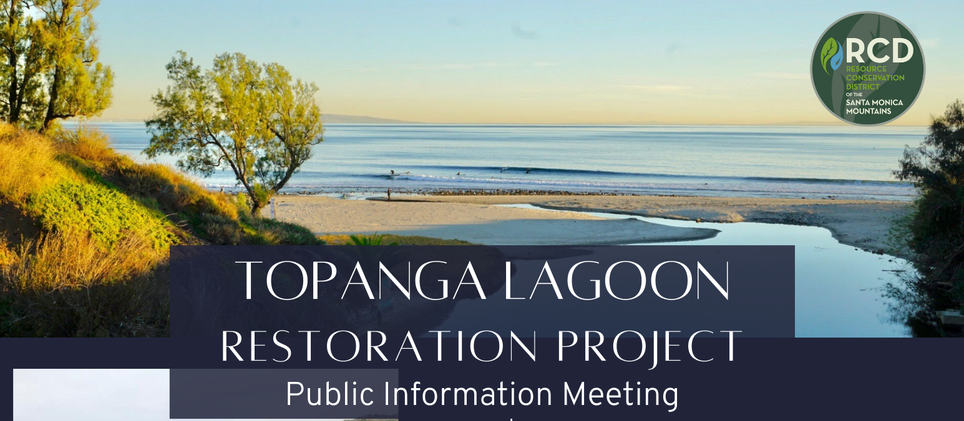
The final environmental impact report for the Topanga Lagoon Restoration Project was recently released. Four build alternatives were considered for the complicated, multi-agency, multi-year project, ranging from doing nothing, to the most ambitious proposal that would have required moving a section of Pacific Coast Highway.
The alternative chosen by State Parks is a hybrid version of “Alternative 3” that includes elements from alternatives 2 and 4. Under this proposal, the lagoon will be expanded from slightly more than one acre to eight acres—smaller than the proposal in alternative 2, larger than the ones in options 3 and 4.
The Malibu Rancho Motel gets a reprieve under the Alternative 3A, which “avoids significant and unavoidable historic and cultural impacts,” the report states. Up to 15 of the remaining cabins will be preserved and restored. Retaining at least some of the historic motel was the preference of State Parks, and the buildings being eligible for the National Registry of Historic Places as one of California’s first motels, helped ensure that they would have a future. The building that is currently home to the Reel Inn also gets a reprieve under the preferred alternative—the popular fish restaurant is just outside the footprint of the restoration project.
All of the other buildings will be removed. The existing Malibu Rancho Motel parking area will be reconfigured and landscaped. The area that now houses the Feed Bin and Oasis Imports will become “Gateway Corner,” with a visitor center, parking, restrooms, picnic facilities, and an improved bus stop. Wiley’s, Cholada, and Rosenthal Wines will also be demolished and that area restored with native vegetation.
A proposed trail will give the public official access to Lower Topanga Canyon for the first time since State Parks acquired the property and it will provide improved access under the highway to the beach.
Beachside changes include reconfiguring the parking lot, relocating the lifeguard building and restrooms landward, and adding a helipad. These changes, and the replacing of the antiquated bridge over Topanga Creek, were part of every alternative except the no-build option. So was the removal of the lone Topanga palm tree and the knoll it stands on—relics from the row of houses that once lined the beach. The public is assured, however, that the view will remain. The beachside changes are needed not only for the health of Topanga Lagoon, but because erosion and sea level rise have increasingly put the beach structures at risk of flooding. The parking lot will be reconfigured and relandscaped as part of the plan, and a helipad and ramp will be added to aid emergency responders.
At the heart of the project is the plan to lengthen the bridge and restore the lagoon at the mouth of the creek, which was narrowed and filled during the construction of Pacific Coast Highway. State biologists are optimistic that the restoration project will greatly improve habitat and connectivity for a wide range of species, including the critical endangered Southern steelhead trout. Under the preferred alternative, the sediment excavated from the lagoon would be placed in the ocean nearshore, southearth of the beach, and downshore, with the goal of replenishing beach sand with clean, native soil, while not impacting Topanga’s surf break.
The preferred alternative opts for wastewater treatment using seepage pits instead of a sewage treatment package plant. The wastewater will be pumped a short distance up Topanga Canyon, away from the beach, and disposed of in seepage pits, to prevent effluent from contaminating the creek water or the ocean.
Construction of the preferred alternative is estimated to last approximately 60 months. The most complicated part of the project, or at least, the part that will have the biggest impact on commuters, will be the replacement of the bridge, but any construction that involves Pacific Coast Highway and the beach can be influenced by a number of variables, including weather. Patience will be required.
Learn more at www.topangalagoonrestoration.org





